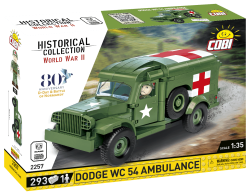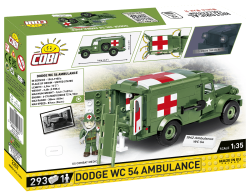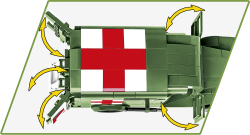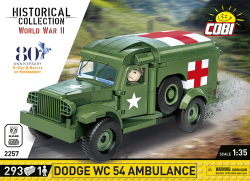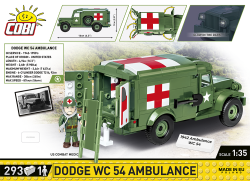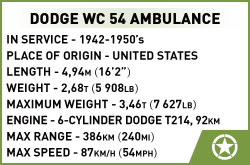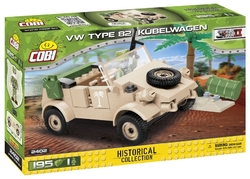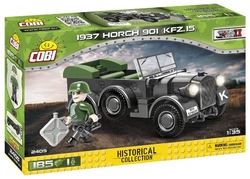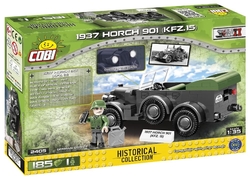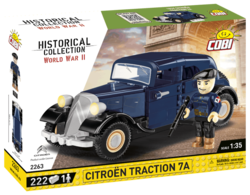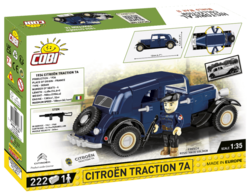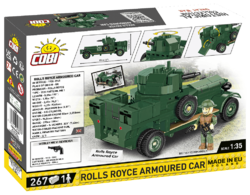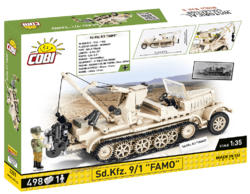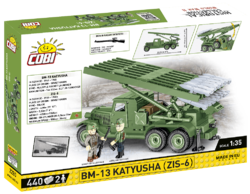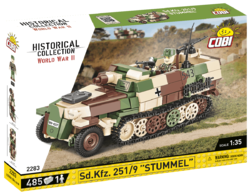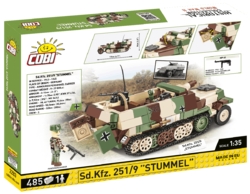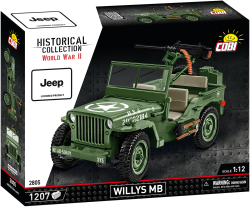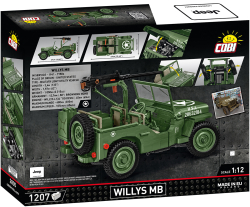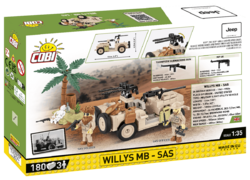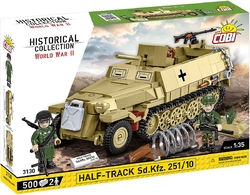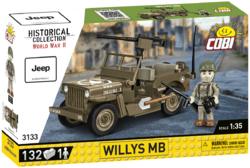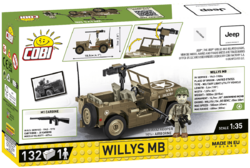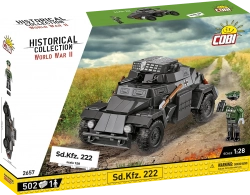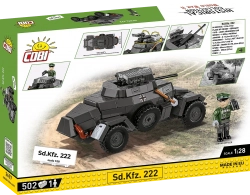Kit of the American field ambulance model Dodge WC 54 in green army camouflage. The assembled model has an opening front door, a bucket mounted in a hinge on the right side, and an opening double-leaf rear door. The front headlight cubes glow in the dark. The kit also includes an American medic-driver figure. The kit is made under the official license of RAM.
Show more
97 %
(30 Ranking)
543 Kč
pcs
Add to Cart
In stock - ready to ship (8 pcs)
| List Number: | COBI-2257 |
| EAN: | 5902251022570 |
| Warranty: | 24 months |
| Manufacturer: | COBI |
| Loyalty Points: | 4 |
| Price excluding VAT: | 448,75 Kč |
Description
Parametres
Files and Links1
Discussion
Reviews1

You know that:
- The United States Army was supplied with vehicles by more than 120 manufacturers, which placed an unbearable burden on the logistics of spare parts and repair, so the command decided to issue a competition for universal vehicles with a single base.
- Chrysler won the competition in 1940, and one of its brands, Dodge, successfully bid on its 3/4-ton WC-54.
- When Dodge began mass production of vehicles for the Army, it had to completely discontinue assembly of civilian vehicles.
- The WC vehicle was produced in about 14 different armed and unarmed variants.
- The Czechoslovak Independent Armoured Brigade also had these vehicles in its armament.
- The ambulance body was not supplied by Dodge, but by the Wayne Corporation of Indiana. However, both Dodge itself and Wayne introduced several modifications for the ambulance. The chassis was fitted with a softer suspension with a higher lift for the comfort of the patients being transported.
- A raised floor made it easier to load patients on stretchers, a heater was installed on the inside of the bulkhead for transported patients, and folding steps made boarding easier.
- In total, over 400 000 units were produced.
- The French army used these ambulances until 1985.
Technical parameters:
- dimensions: length 4.94 m, width 1.97 m, height 2 29 m
- kerb weight 2 685 kg
- power unit petrol 6-cylinder 3,8 L Chrysler T214 engine with an output of 70,1 kW
- speed 4 forward + 1 reverse
- maximum speed 87 km/h
- fuel tank capacity 136 l
- fuel consumption 35,3 l/100km
- range up to 386 km
- wading distance 0.86 m
- crew paramedic + paramedic-driver
- capacity 4 lying or 7 sitting persons
From the memoirs of American medic George Anderson:
"Dodge was a simple car. It could handle any terrain or mud. If something went wrong, it usually took a rock and a piece of wire to fix it. There was no armor protection, and when there was shooting around, we looked to get away as soon as possible."
Assembly instructions
| Version (series) | 04/2024 |
|---|---|
| Number of figurines | 1 pcs |
| Scale | 1 : 35 |
| Dimensions after assembly | 16 x 7 cm |
| Box dimensions | 27,5 x 20 x 6 cm |
| Number of pieces | 293 pcs |
| Package weight | 340 g |
| Recommended age | 7+ |
| Material | Plastic |
| Collection | World War II |
| Compatible with other brand of kits | Yes |
| Contains luminous blocks | Yes |
Discussion is empty.
97 %
5
28x
4
1x
3
0x
2
1x
1
0x

















